
The Blitz was a German bombing campaign against the United Kingdom for eight months from 7 September 1940 to 11 May 1941 during the Second World War.

Firebombing is a bombing technique designed to damage a target, generally an urban area, through the use of fire, caused by incendiary devices, rather than from the blast effect of large bombs. In popular usage, any act in which an incendiary device is used to initiate a fire is often described as a "firebombing".
The Baedeker Blitz or Baedeker raids was a series of bombing raids in April and May 1942 by the German Luftwaffe on English cities during World War II. The name derives from Baedeker, a series of German tourist guide books, including detailed maps, which were used to select targets for bombing.
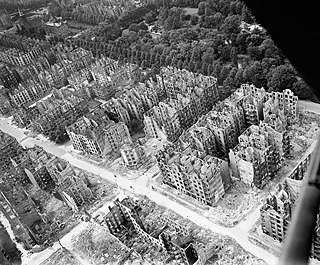
The Allied bombing of Hamburg during World War II included numerous attacks on civilians and civic infrastructure. As a large city and industrial centre, Hamburg's shipyards, U-boat pens, and the Hamburg-Harburg area oil refineries were attacked throughout the war.

World War II (1939–1945) involved sustained strategic bombing of railways, harbours, cities, workers' and civilian housing, and industrial districts in enemy territory. Strategic bombing as a military strategy is distinct both from close air support of ground forces and from tactical air power. During World War II, many military strategists of air power believed that air forces could win major victories by attacking industrial and political infrastructure, rather than purely military targets. Strategic bombing often involved bombing areas inhabited by civilians, and some campaigns were deliberately designed to target civilian populations in order to terrorize them and disrupt their usual activities. International law at the outset of World War II did not specifically forbid the aerial bombardment of cities – despite the prior occurrence of such bombing during World War I (1914–1918), the Spanish Civil War (1936–1939), and the Second Sino-Japanese War (1937–1945).

The Belfast Blitz consisted of four German air raids on strategic targets in the city of Belfast in Northern Ireland, in April and May 1941 during World War II, causing high casualties. The first was on the night of 7–8 April 1941, a small attack which probably took place only to test Belfast's defences. The next took place on Easter Tuesday, 15 April 1941, when 200 Luftwaffe bombers attacked military and manufacturing targets in the city of Belfast. Some 900 people died as a result of the bombing and 1,500 were injured. High explosive bombs predominated in this raid. Apart from those on London, this was the greatest loss of life in any night raid during the Blitz.

The Liverpool Blitz was the heavy and sustained bombing of the English city of Liverpool and its surrounding area, during the Second World War by the German Luftwaffe.

The Manchester Blitz was the heavy bombing of the city of Manchester and its surrounding areas in North West England during the Second World War by the German Luftwaffe. It was one of three major raids on Manchester, an important inland port and industrial city; Trafford Park in neighbouring Stretford was a major centre of war production.

The Birmingham Blitz was the heavy bombing by the Nazi German Luftwaffe of the city of Birmingham and surrounding towns in central England, beginning on 9 August 1940 as a fraction of the greater Blitz, which was part of the Battle of Britain; and ending on 23 April 1943. Situated in the Midlands, Birmingham, the most populous British city outside London, was considered an important industrial and manufacturing location. Around 1,852 tons of bombs were dropped on Birmingham, making it the third most heavily bombed city in the United Kingdom in the Second World War, behind London and Liverpool.
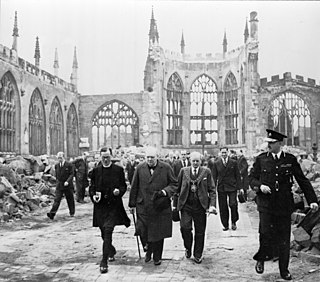
The Coventry Blitz was a series of bombing raids that took place on the British city of Coventry. The city was bombed many times during the Second World War by the German Air Force (Luftwaffe). The most devastating of these attacks occurred on the evening of 14 November 1940 and continued into the morning of 15 November.

The Bristol Blitz was the heavy bombing of Bristol, England by the Nazi German Luftwaffe during the Second World War. Due to the presence of Bristol Harbour and the Bristol Aeroplane Company, the city was a target for bombing and was easily found as enemy bombers were able to trace a course up the River Avon from Avonmouth using reflected moonlight on the waters, into the heart of the city. Bristol was the fifth-most heavily bombed British city of the war.
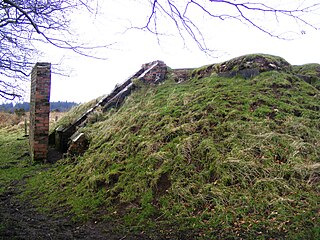
Starfish sites were large-scale night-time decoys created during the Blitz to simulate burning British cities. The aim was to divert German night bombers from their intended targets so they would drop their ordnance over the countryside. The sites were an extension of Colonel John Turner's decoy programme for airfields and factories. Following the bombing, and near destruction, of Coventry in November 1940, Turner was tasked with creating decoys for seven major cities.
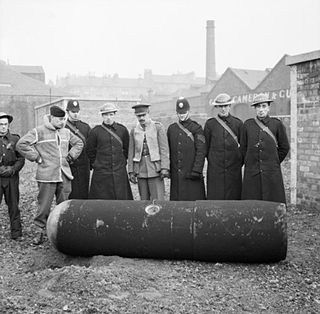
The Clydebank Blitz was a pair of air raids conducted by the Luftwaffe on the shipbuilding and munition-making town of Clydebank in Scotland. The bombings took place in March 1941.

The Hull Blitz was the bombing campaign that targeted the English port city of Kingston upon Hull by the German Luftwaffe during the Second World War.
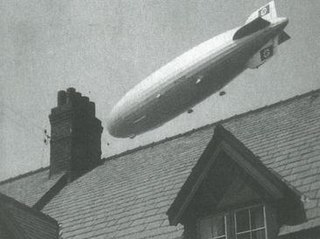
The Barrow Blitz is the name given to the Luftwaffe bombings of Barrow-in-Furness, United Kingdom during World War II. They took place primarily during April and May 1941, although the earliest Luftwaffe bombing occurred in September 1940. VSEL shipyard was the main target for bombing alongside Barrow's steelworks, which were formerly the largest in the world.

The Nottingham Blitz was an attack by the Nazi German Luftwaffe on Nottingham during the night of 8–9 May 1941.
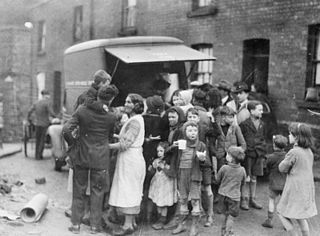
The Swansea Blitz was the heavy and sustained bombing of Swansea by the German Luftwaffe from 19 to 21 February 1941. A total of 230 people were killed and 397 were injured. Swansea was selected by the Germans as a legitimate strategic target due to its importance as a port and docks and the oil refinery just beyond, and its destruction was key to Nazi German war efforts as part of their strategic bombing campaign aimed at crippling coal export and demoralizing civilians and emergency services.

The term Exeter Blitz refers to the air raids by the German Luftwaffe on the British city of Exeter, Devon, during the Second World War. The city was bombed in April and May 1942 as part of the so-called "Baedeker raids", in which targets were chosen for their cultural and historical, rather than their strategic or military, value.

The Newcastle Blitz refers to the strategic bombing of Newcastle upon Tyne, England by the Nazi German Luftwaffe during the second world war. Close to 400 people were killed between July 1940 and December 1941 during bombing raids on the city.
The Norwich Blitz refers to the heavy bombing of Norwich and surrounding area by the German Luftwaffe during World War II. The bombings launched on numerous British cities were known as the Blitz.


















